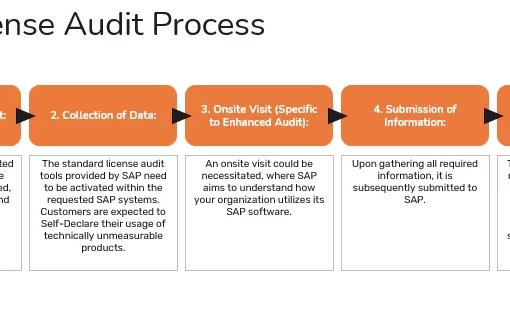Blockchain is an innovative technology that has gained immense popularity in recent years. It is a distributed ledger technology that allows transactions to be recorded and verified in a secure and transparent manner. Blockchain is a decentralized technology, which means that it does not rely on a central authority to manage and verify transactions. Instead, it is managed by a network of users who collectively maintain the integrity of the system.

What is Blockchain?
Blockchain is a distributed ledger technology that allows data to be recorded in a secure and transparent manner. Each block in the chain contains a unique cryptographic hash, which links it to the previous block. This creates a chain of blocks that cannot be altered without invalidating the entire chain. This makes the system incredibly secure and ensures that data is tamper-proof.
Benefits of Block ledger :
Decentralization
One of the primary benefits of the Chain of blocks is its decentralization. This means that the system does not rely on a central authority to manage and verify transactions. Instead, it is managed by a network of users who collectively maintain the integrity of the system. This makes it more secure and less susceptible to hacking than centralized systems. By eliminating the need for intermediaries, the Chain of blocks also reduces transaction costs and increases efficiency.
Transparency
Transactions on the Chain of blocks are transparent and can be viewed by anyone on the network. This makes it easier to detect fraudulent activity and increases trust in the system. The transparency of the Chain of blocks also makes it easier to track goods and services in supply chains, which is useful in industries such as food, pharmaceuticals, and luxury goods.
Immutability
Once data is recorded on the Chain of blocks, it cannot be altered or deleted. This ensures the integrity of the system and prevents tampering. Immutability is a key feature of blockchain that makes it an ideal platform for secure data storage and transaction processing.
Faster transactions
Blockchain transactions are processed much faster than traditional transactions, which can take days or even weeks to clear. This is because the blockchain eliminates the need for intermediaries, which can slow down the transaction process. In addition, the distributed nature of the blockchain means that there is no single point of failure, which further increases the speed of transactions.
Lower transaction costs
Blockchain transactions are much cheaper than traditional transactions, which can involve high fees charged by intermediaries. Block ledger eliminates the need for intermediaries, which reduces the cost of transactions. This makes Block ledger an ideal platform for micropayments and other low-cost transactions.
Security
The cryptographic hashes used in the blockchain ensure that data is secure and tamper-proof. This makes it much harder for hackers to access or alter data on the Chain of blocks. In addition, the distributed nature of the blockchain means that there is no single point of failure, which further increases the security of the system. This is particularly important in industries such as banking and finance, where security is paramount.
Data Privacy
Blockchain technology can provide a high level of data privacy as the data on the blockchain is encrypted, and the only people who have access to it are the ones who have the keys to decrypt it. This makes it useful in industries where data privacy is essential, such as healthcare.
Smart Contracts
Smart contracts are self-executing contracts with the terms of the agreement between buyer and seller being directly written into lines of code. This allows for the automation of contract execution and eliminates the need for intermediaries such as lawyers. Smart contracts are secure, transparent, and enforceable, making them an ideal tool for a wide range of applications, including supply chain management, real estate, and financial services.
Interoperability
Different blockchain systems are often not compatible with each other. This can make it difficult to integrate blockchain into existing systems. However, there are efforts underway to create standards and protocols that will allow for interoperability between different blockchain systems. This will enable blockchain to be used in a wider range of applications and increase its overall usefulness.
Applications of Blockchain:
Cryptocurrency: The most well-known application of blockchain is cryptocurrency. Bitcoin, the first cryptocurrency, was created using blockchain technology.
Supply Chain Management: Blockchain is increasingly being used for the supply chain management. It allows for more transparency and accountability in the supply chain, making it easier to track goods and ensure that they do not tamper with or counterfeit.
Identity Verification: Blockchain can be used to verify the identity of individuals or organizations. This can be useful in areas such as voting, where it is important to ensure that only eligible voters can cast their votes.
Healthcare: Blockchain can be used to securely store and share medical records. This can improve patient outcomes by ensuring that medical professionals have access to up-to-date and accurate medical records.
Banking and Finance: Blockchain has many applications in banking and finance, including cross-border payments, trade finance, and securities trading.
Challenges of Blockchain:
Scalability: One of the biggest challenges facing blockchain is scalability. As more users join the network, the system can become slow and inefficient.
Regulation: Block ledger is still a relatively new technology, and there is a lack of regulatory framework in many countries. This can make it difficult to use a Chain of blocks for certain applications, such as banking and finance.
Interoperability: Different Chains of block systems are often not compatible with each other. This can make it difficult to integrate blockchain into existing systems.
Energy Consumption: The process of mining, which is used to verify transactions on the Chain of blocks, requires a lot of energy. This can have a negative impact on the environment.
What are the 4 concepts of blockchain?
The four key concepts of blockchain technology are:
- Decentralization: Blockchain operates on a decentralized network where multiple participants, known as nodes, maintain a copy of the entire blockchain. This decentralized nature eliminates the need for a central authority or intermediary, such as a bank, to validate and record transactions. Decentralization enhances transparency, security, and trust by distributing control among network participants.
- Distributed Ledger: Blockchain utilizes a distributed ledger, which is a continuously growing list of records called blocks. Each block contains a set of transactions and a reference to the previous block, forming a chain of blocks. This distributed ledger is replicated across all nodes in the network, ensuring that all participants have access to the same version of the blockchain. The distributed ledger provides transparency, immutability, and resilience against data tampering.
- Cryptography: Blockchain relies on cryptographic techniques to secure transactions and ensure the integrity of the data. Transactions recorded on the blockchain are digitally signed using cryptographic keys, which provide authentication and ensure that only authorized parties can participate in the network. Cryptography also ensures that once a transaction is added to the blockchain, it cannot be modified or tampered with without detection.
- Consensus Mechanism: Consensus mechanisms are used in blockchain networks to achieve agreement among network participants on the validity and order of transactions. Different consensus algorithms, such as Proof of Work (PoW), Proof of Stake (PoS), or Practical Byzantine Fault Tolerance (PBFT), are employed to validate transactions and add new blocks to the blockchain. Consensus mechanisms ensure that all participants reach a consensus on the state of the blockchain without relying on a central authority.
These four concepts form the foundation of blockchain technology and enable its core features, including decentralization, transparency, security, immutability, and trust among participants.
Conclusion:
Blockchain is an innovative technology with many potential applications. It offers a secure, transparent, and decentralized way to record and verify transactions. Despite its many benefits, there are still challenges that must be overcome in order for the Chain of blocks to be widely adopted. As more companies and organizations explore the potential of blockchain, it is likely that we will see many new and exciting applications of this technology in the years to come.
We at eLearning solutions provide SAP courses online and offline. Let us know if you want to make a career in this amazing industry.
For SAP & Oracle Consulting services you can click here.





